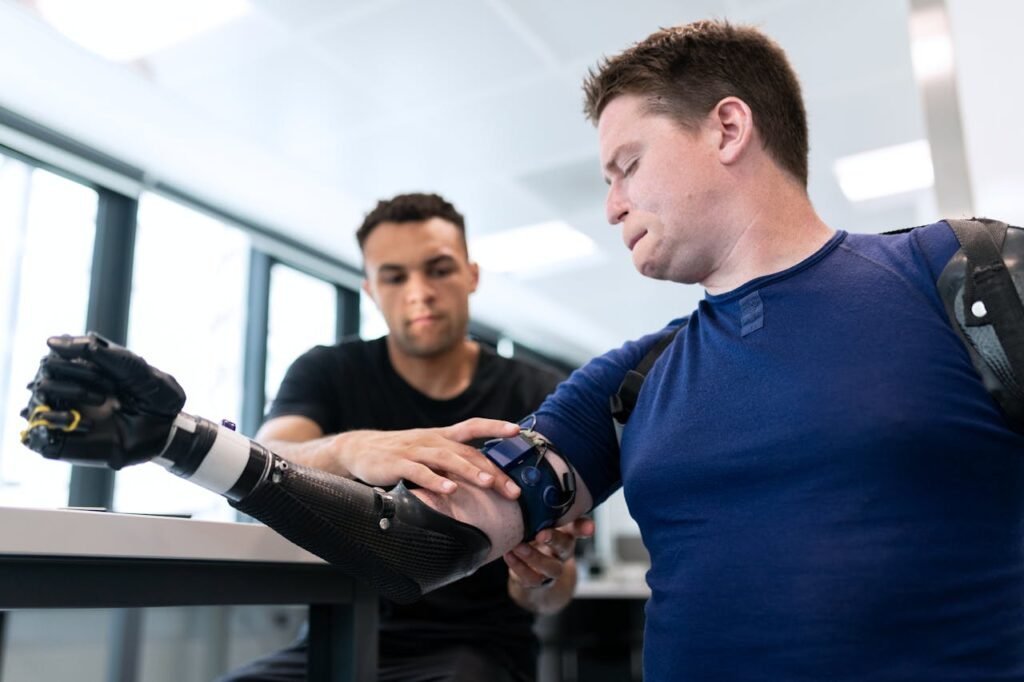Choosing your first prosthetic limb is a significant step, one that marks the beginning of a journey toward independence and renewed mobility. It’s a decision filled with hope and anticipation but can also feel overwhelming due to the range of options, features, and factors to consider. Whether you’ve recently undergone an amputation or are transitioning to a more advanced prosthetic, understanding the fundamentals can make the process smoother and more empowering.
This guide is designed to provide clarity for first-time buyers, helping you navigate the various choices with confidence. From understanding the key components to finding the right prosthetist, we’ll cover everything you need to know to make an informed decision that aligns with your lifestyle and goals.
Understanding Prosthetic Basics
Before diving into the specifics, it’s important to grasp the foundational elements of prosthetic limbs. Prosthetics are not one-size-fits-all devices; they are highly individualized tools designed to meet the unique needs of each user.
The Components of a Prosthetic Limb
A prosthetic limb consists of several interconnected parts, each playing a vital role in its functionality and comfort. These include:
- Socket: The part that connects the prosthetic to your residual limb, ensuring a secure and comfortable fit.
- Suspension System: Keeps the prosthetic in place during movement.
- Pylon: The structure that provides support and connects the socket to the terminal device.
- Terminal Device: The functional end of the prosthetic, such as a foot, hand, or specialized tool.
For first-time buyers, understanding how these components work together helps clarify what to prioritize when choosing a prosthetic limb.
Identifying Your Needs and Goals
Your lifestyle, activity level, and personal goals should guide your prosthetic choice. Consider what you want to achieve with your prosthetic limb—whether it’s regaining the ability to walk, returning to work, or pursuing recreational activities.
Matching the Prosthetic to Your Lifestyle
If you lead a highly active lifestyle, you may need a prosthetic designed for running, hiking, or other dynamic activities. On the other hand, if your daily routine involves less physical exertion, a simpler and more cost-effective prosthetic may suffice.
Businesses can support users by providing lifestyle-specific prosthetics and guiding them through the decision-making process. Offering consultations that explore the user’s day-to-day activities ensures they select a device that aligns with their needs.
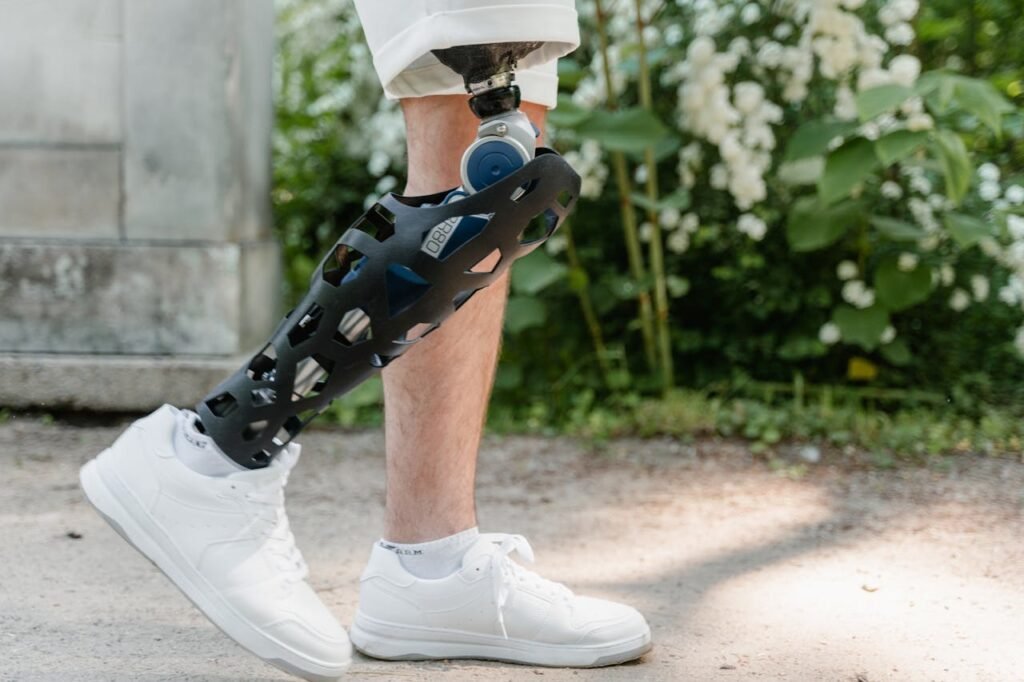
Finding the Right Prosthetist
The relationship between you and your prosthetist is critical to the success of your prosthetic journey. A skilled and attentive prosthetist will help ensure your prosthetic fits well, functions as intended, and adapts to your changing needs over time.
The Importance of Communication
Effective communication with your prosthetist allows you to express concerns, preferences, and feedback, which are essential for achieving optimal results. For first-time buyers, feeling heard and supported can make the transition to a prosthetic limb much smoother.
Businesses can facilitate this relationship by partnering with experienced prosthetists who are not only technically proficient but also empathetic and patient. Offering access to a network of trusted professionals builds confidence in your brand and products.
Choosing the Right Type of Prosthetic Limb
Prosthetic limbs come in various designs, each tailored to specific needs, activities, and preferences. For a first-time buyer, understanding the types of prosthetics available is essential to making a well-informed choice that aligns with your goals and lifestyle.
Basic Prosthetics
Basic prosthetics focus on functionality and simplicity, making them an excellent starting point for individuals who prioritize affordability and ease of use.
These devices are typically lightweight and designed for basic activities like walking or standing. While they may lack advanced features, they are reliable and effective for day-to-day mobility.
For first-time buyers, basic prosthetics are often a practical option for learning to navigate life with a new limb. Businesses can enhance their appeal by emphasizing durability and comfort, particularly for users adjusting to their first prosthetic.
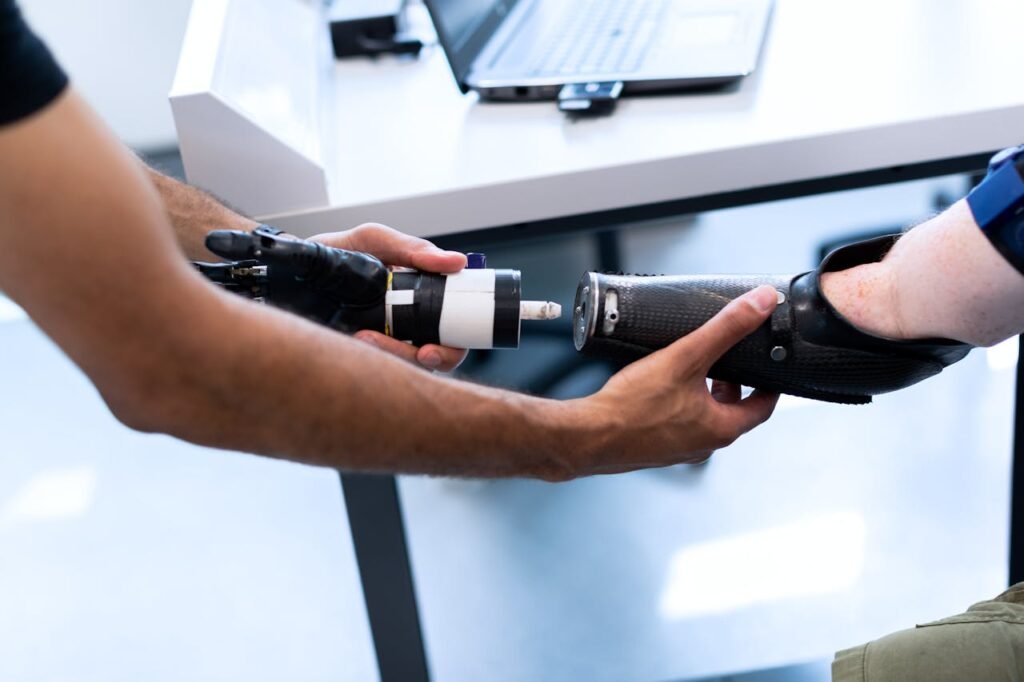
Advanced Prosthetics
Advanced prosthetics incorporate state-of-the-art technology, offering features like myoelectric control, microprocessor joints, and customizable components. These devices are ideal for individuals seeking enhanced functionality and the ability to perform complex movements.
Myoelectric prosthetics, for instance, use electrical signals from the muscles to control movements, providing a more natural and intuitive experience. Similarly, microprocessor-controlled knees and ankles adapt to the user’s gait, making walking smoother and safer on uneven terrain.
For businesses, showcasing how these advanced features improve quality of life and user independence can resonate with individuals looking to invest in long-term mobility solutions. Providing demonstrations or user testimonials adds authenticity and clarity to the decision-making process.
Ensuring a Proper Fit
The fit of a prosthetic limb is arguably the most critical factor in its success. A poorly fitted prosthetic can lead to discomfort, reduced mobility, and even long-term physical complications. For first-time buyers, achieving a proper fit is a combination of professional expertise and open communication.
The Role of Socket Design
The socket is the most personal component of a prosthetic limb, as it interfaces directly with the residual limb. A well-designed socket ensures even weight distribution, minimizes pressure points, and provides a secure connection. Customization is key, as every individual’s residual limb is unique.
For businesses, investing in advanced fitting technologies like 3D scanning or digital modeling ensures precise socket design. Educating users about the importance of socket comfort and offering trial periods for adjustments can help first-time buyers feel more confident in their choice.
Adapting to Residual Limb Changes
Over time, the residual limb may change in shape or size due to factors like healing, weight fluctuations, or muscle development. These changes can affect the fit of the prosthetic, requiring periodic adjustments or even a new socket.
Businesses that emphasize follow-up care and provide affordable options for adjustments or replacements demonstrate a commitment to user satisfaction. Offering flexible care packages or warranties that include these services can enhance the overall experience for first-time buyers.
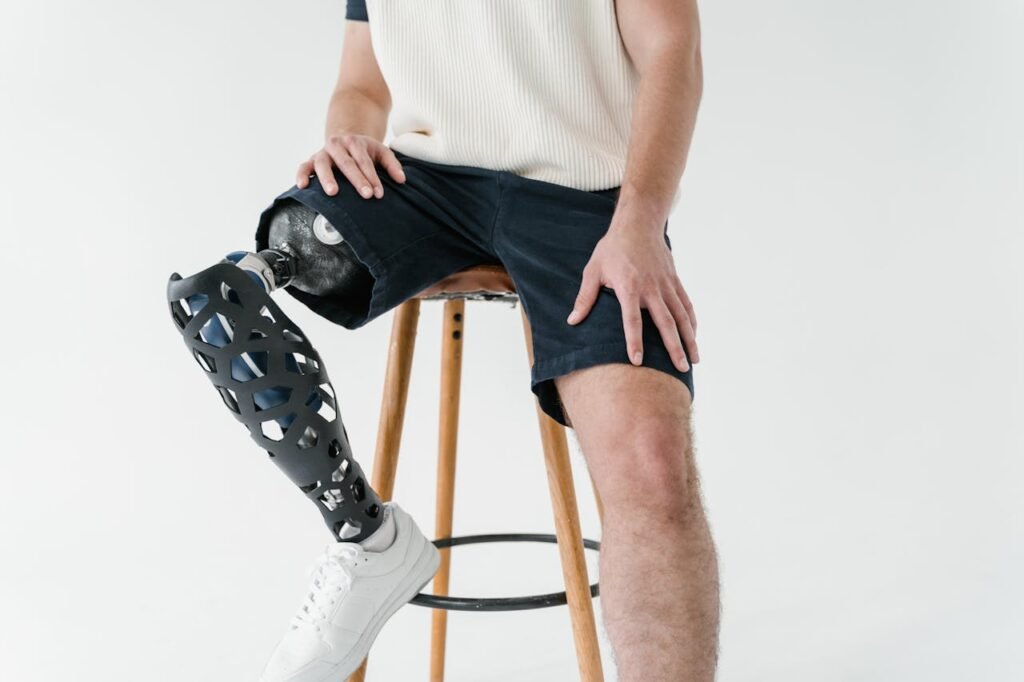
Balancing Cost and Value
Cost is a significant consideration for first-time buyers, particularly when navigating the complexities of insurance coverage, funding options, and out-of-pocket expenses. While it’s tempting to focus solely on price, it’s essential to evaluate the long-term value of a prosthetic limb.
Understanding Insurance and Funding
Insurance policies and funding options vary widely, affecting the affordability of prosthetic limbs. Some policies may cover only basic models, while others provide partial reimbursement for advanced prosthetics. Navigating these options can be challenging, especially for first-time buyers.
For businesses, providing clear guidance on insurance claims and funding opportunities can be a valuable service. Offering resources like step-by-step guides or connecting users with financial assistance programs ensures that cost concerns don’t hinder access to the right prosthetic.
Prioritizing Quality and Longevity
While initial costs may seem daunting, investing in a high-quality prosthetic often results in better durability, performance, and overall satisfaction.
First-time buyers should consider how well a prosthetic will adapt to their evolving needs and whether it offers features that enhance their daily life.
Businesses can highlight the long-term benefits of their products by showcasing durability, upgrade options, and warranties. Demonstrating the cost-effectiveness of these features over time reinforces the value of choosing a quality prosthetic.
Adapting to Life with a Prosthetic Limb
For first-time buyers, adapting to life with a prosthetic limb is a journey that extends beyond the purchase itself. It involves building confidence, mastering the use of the device, and finding a rhythm that integrates the prosthetic seamlessly into daily activities. Businesses play a pivotal role in this phase by offering ongoing support, resources, and education to ensure a smooth transition.
Rehabilitation and Physical Therapy
Rehabilitation is a cornerstone of successful prosthetic use, especially for first-time users. Physical therapy helps individuals strengthen their residual limb, improve balance, and learn the correct techniques for walking, standing, or other activities.
A structured rehabilitation plan accelerates the adjustment process and reduces the risk of complications such as joint strain or posture issues.
For businesses, partnering with rehabilitation centers or offering in-house therapy sessions can enhance the user experience. Providing access to experienced therapists or creating instructional videos that guide users through key exercises ensures they feel supported at every step of their journey.
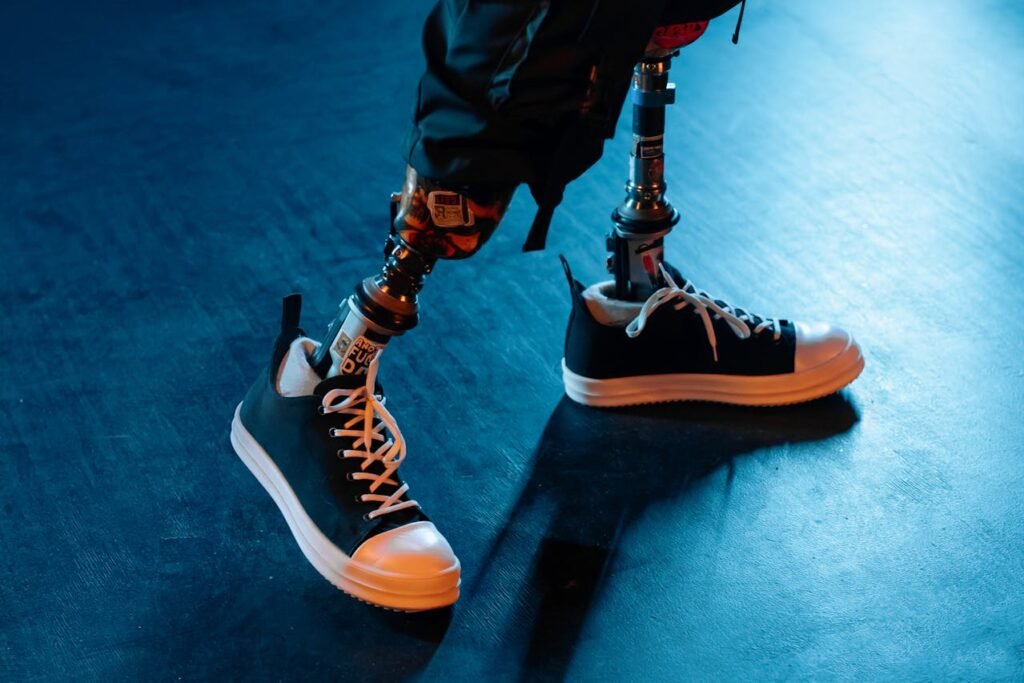
Building Confidence Through Practice
Using a prosthetic limb for the first time can feel daunting, but practice builds confidence. First-time buyers may need time to adjust to the weight, fit, and functionality of their prosthetic.
Simple daily tasks, like climbing stairs or navigating uneven terrain, may initially pose challenges but become easier with repetition and guidance.
For businesses, encouraging users to practice in safe, controlled environments helps them gain confidence. Offering follow-up consultations to address concerns or provide tips on overcoming common challenges reinforces the company’s commitment to user success.
Emotional and Social Considerations
The emotional and social aspects of using a prosthetic limb are just as important as the physical ones. First-time buyers often face a mix of emotions, from excitement and hope to anxiety and uncertainty. Acknowledging these feelings and providing resources for emotional well-being is essential for a positive experience.
Fostering a Positive Mindset
Adjusting to a prosthetic limb can be a deeply personal experience. Some individuals may feel self-conscious about their appearance or worry about how others perceive them.
Encouraging a positive mindset and focusing on the opportunities a prosthetic provides—such as regained independence and mobility—can help users embrace their new reality.
Businesses can support this transition by sharing inspiring stories of other users who have overcome similar challenges. Creating a community of prosthetic users, either through social media groups or in-person events, fosters connection and mutual encouragement.
Addressing Social Challenges
Social interactions may feel different for first-time prosthetic users, especially in public settings.
Businesses can ease this transition by offering practical advice on navigating social situations, such as explaining the prosthetic to curious individuals or dealing with unwanted attention.
Providing these resources demonstrates a holistic approach to user care.
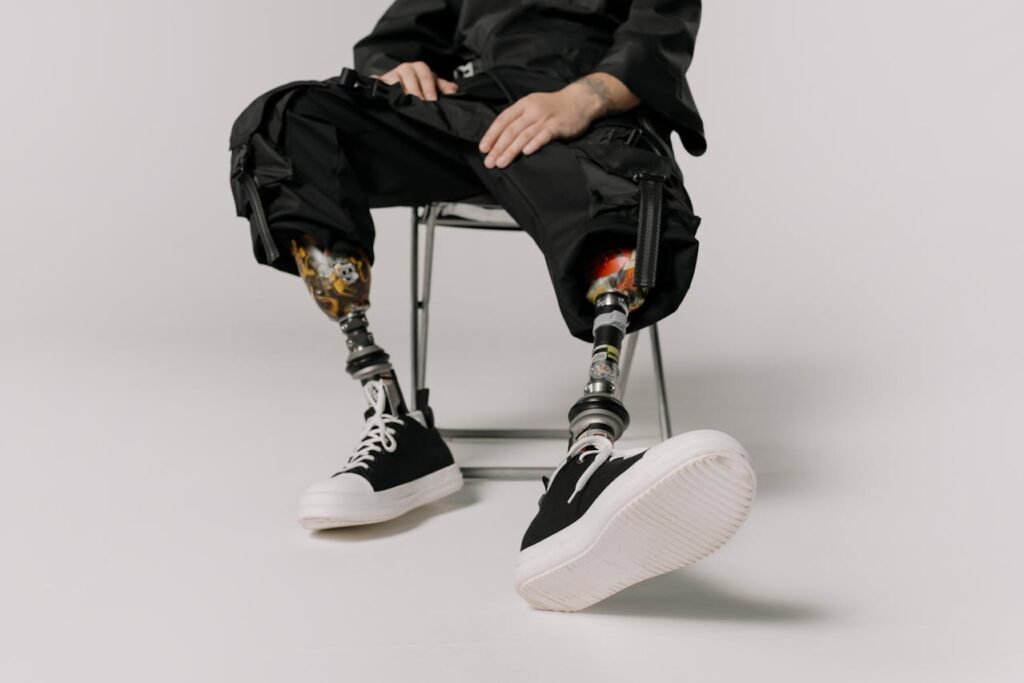
Emphasizing Ongoing Support
First-time buyers benefit greatly from ongoing support that extends beyond the initial purchase. Whether it’s routine maintenance, upgrades, or simply answering questions, businesses that prioritize continuous care set themselves apart in the prosthetics industry.
Regular Check-Ins and Adjustments
Over time, a user’s needs and preferences may change, requiring adjustments to their prosthetic. Businesses that offer regular check-ins—either in-person or virtually—can identify and address issues before they become significant problems.
These touchpoints also provide an opportunity to educate users on new features or accessories that may enhance their experience.
Creating a Support Network
A well-connected support network is invaluable for first-time buyers. Businesses can collaborate with prosthetists, physical therapists, and peer support groups to create a comprehensive ecosystem of care.
Offering a centralized platform where users can access these resources simplifies the process and ensures they feel supported.
Navigating Technological Advancements
The prosthetics industry is advancing rapidly, with new technologies making prosthetic limbs more functional, adaptive, and intuitive than ever before. For first-time buyers, understanding these advancements can help them make choices that not only meet their current needs but also provide room for growth as technology evolves.
The Integration of Smart Technology
Smart prosthetics are becoming increasingly popular due to their ability to provide real-time feedback, adaptive control, and enhanced functionality. Features such as sensors that monitor gait patterns, microprocessors that adjust joint movements, and connectivity to mobile apps are redefining what prosthetic limbs can achieve.
For first-time buyers, the idea of integrating technology into their prosthetic limb may feel overwhelming. Businesses can simplify this transition by offering hands-on training, clear documentation, and personalized support.
Demonstrating the practical benefits of smart technology—such as improved balance, energy efficiency, or smoother transitions—helps users appreciate its value.
Modular Designs for Customization
Modular prosthetics offer a unique advantage for first-time buyers, allowing them to start with a basic setup and upgrade or modify components as needed. This flexibility is especially valuable for individuals who are unsure about their long-term needs or plan to explore different activities over time.
Businesses that prioritize modular designs can appeal to a broader range of users. Highlighting the ease with which components can be replaced, upgraded, or customized makes the prosthetic feel like a long-term investment rather than a fixed solution. Offering modular kits or packages tailored to specific lifestyles further enhances the appeal.
Preparing for the First Prosthetic Fitting
The fitting process is a pivotal moment in the journey of a first-time buyer. It determines how well the prosthetic will fit, function, and integrate into daily life. A successful fitting requires careful attention to detail, collaboration with a skilled prosthetist, and open communication about the user’s needs and expectations.
Setting Realistic Expectations
First-time buyers may enter the fitting process with high hopes but also some misconceptions about what their prosthetic can achieve. It’s important to set realistic expectations, emphasizing that initial discomfort or a learning curve is normal and that adjustments can be made over time to improve the fit and functionality.
For businesses, educating users about what to expect during and after the fitting builds trust and reduces anxiety. Providing resources like FAQs, videos, or step-by-step guides ensures users feel prepared and informed.

The Role of Trial Periods
A trial period allows first-time buyers to test their prosthetic in real-world conditions before committing to a final design. During this time, they can identify areas for improvement, such as socket adjustments or component changes.
Businesses that offer flexible trial periods demonstrate a commitment to user satisfaction. Encouraging users to provide feedback during this phase helps refine the product and ensures it aligns with their needs. Highlighting this policy in your marketing materials can attract first-time buyers who value flexibility and support.
The Emotional Impact of a Prosthetic Limb
The journey of choosing and adapting to a prosthetic limb is as much emotional as it is physical. For first-time buyers, this journey can evoke a range of emotions, from hope and excitement to apprehension and doubt. Addressing these emotional aspects is key to creating a positive and empowering experience.
Building a Supportive Environment
A supportive environment can make all the difference for first-time buyers. Family, friends, and healthcare professionals play crucial roles in encouraging and motivating the user throughout the process.
Businesses can contribute to this environment by fostering open communication, offering peer support programs, or connecting users with inspiring role models.
Celebrating Milestones
Each step in the journey—whether it’s completing a fitting, mastering a new skill, or reaching a personal goal—deserves recognition. Celebrating these milestones reinforces the user’s progress and builds confidence in their ability to adapt and thrive.
For businesses, creating opportunities to celebrate user achievements—such as sharing success stories or hosting community events—strengthens the bond between the user and the brand. It also demonstrates a commitment to supporting users beyond the purchase phase.
A Lifelong Partnership
For first-time buyers, choosing a prosthetic limb is not just a transaction—it’s the beginning of a lifelong partnership. Businesses that view their role as ongoing rather than transactional can create deeper relationships with users, fostering loyalty and trust.
Personalized Support for Changing Needs
Every individual’s needs change over time, whether due to shifts in activity levels, aging, or advancements in prosthetic technology. A true partnership anticipates these changes and provides proactive solutions to address them.
For instance, a young athlete may require different prosthetic upgrades or adjustments as they take on new challenges, while an older user may prioritize comfort and stability over performance.
Businesses can stay ahead of these transitions by maintaining an active dialogue with their users. Periodic check-ins, either in person or through digital platforms, allow providers to understand their customers’ evolving needs and recommend timely solutions.
By offering upgrades, modular components, or customized care plans, businesses can position themselves as trusted allies in their users’ journeys.
Establishing a Feedback Loop
One of the most effective ways to create a strong lifelong partnership is by establishing a feedback loop. Regularly seeking input from users about their experiences with their prosthetic limb provides invaluable insights into areas of improvement or innovation.
This not only helps businesses refine their products and services but also shows users that their voices are valued.
For businesses, creating user-friendly channels for feedback—such as online surveys, support hotlines, or dedicated customer success teams—can strengthen the relationship.
Highlighting how user feedback has driven tangible improvements in products or services reinforces the mutual benefits of this partnership.

Proactive Maintenance and Care Programs
A long-lasting partnership thrives on consistent support, particularly when it comes to maintaining the prosthetic’s functionality and comfort. Users may require adjustments to their prosthetic as their residual limb changes over time or as wear and tear naturally occur.
Proactive care programs that include scheduled maintenance, performance assessments, and access to repair services ensure users feel supported and confident in their device’s reliability.
Businesses can make these services more accessible by offering subscription-based care plans or bundled maintenance packages. Transparent pricing and flexible options demonstrate a commitment to making high-quality care affordable and convenient, fostering trust and satisfaction.
Staying Ahead of Technology
The prosthetics industry is constantly evolving, with advancements in materials, smart technology, and biomechanical engineering driving innovation.
A strong partnership involves keeping users informed about these developments and helping them access upgrades or enhancements that could improve their quality of life.
For businesses, providing educational content—such as webinars, newsletters, or workshops—on the latest trends in prosthetic technology helps users stay engaged and feel empowered to make informed decisions.
Offering trade-in programs or discounts for upgrading to new models ensures that users can benefit from advancements without facing significant financial barriers.
Conclusion
Choosing a prosthetic limb for the first time is a significant milestone, filled with both possibilities and challenges. For first-time buyers, the process can be daunting, but it’s also an opportunity to regain mobility, independence, and confidence.
By understanding the basics of prosthetics, evaluating their needs, and seeking the right support, users can make informed decisions that lead to a successful and fulfilling experience.
For businesses, the responsibility extends far beyond providing a product. It’s about empowering users with education, resources, and personalized care to ensure that every individual finds a prosthetic limb that aligns with their unique goals and lifestyle.
Whether through innovative designs, accessible support services, or fostering community connections, businesses have the power to turn this critical decision into a transformative journey.
The path to finding the right prosthetic limb may have its hurdles, but with the right knowledge, support, and tools, first-time buyers can step confidently into a future full of potential and possibility.
As a business committed to enhancing lives, you play an essential role in shaping that future—one that prioritizes comfort, functionality, and empowerment. Together, we can help first-time buyers move forward with strength, resilience, and hope.



